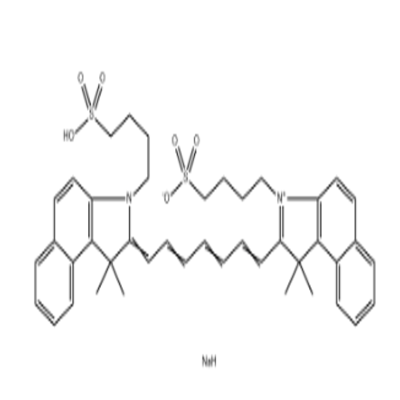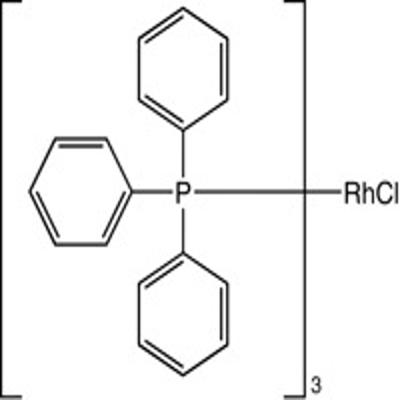-
Categories
-
Pharmaceutical Intermediates
-
Active Pharmaceutical Ingredients
-
Food Additives
- Industrial Coatings
- Agrochemicals
- Dyes and Pigments
- Surfactant
- Flavors and Fragrances
- Chemical Reagents
- Catalyst and Auxiliary
- Natural Products
- Inorganic Chemistry
-
Organic Chemistry
-
Biochemical Engineering
- Analytical Chemistry
- Cosmetic Ingredient
-
Pharmaceutical Intermediates
Promotion
ECHEMI Mall
Wholesale
Weekly Price
Exhibition
News
-
Trade Service
The two-year rapid progress of immunotherapy, immunotherapy efficacy data bright, but the price is too unfriendly to ordinary families, after all, this medicine is not cheap, a year costing hundreds of thousands of yuan.
the length of medication has become a growing concern for patients.
is still in the exploratory stage about when PD-1 will stop, so there is no exact dosing indicator.
to solve this problem, scientists conducted a randomized controlled clinical trial, which was recently published in the authoritative medical journal JCO.
this is the first randomized controlled clinical trial to date to explore the optimal drug age for PD-1 antibodies for advanced solid tumors, which is important for both patients and doctors.
, let's take a look at this clinical trial.
CheckMate153 is a phase IIIb/IV multi-center randomized controlled study in which patients in the group had received at least one-line systemic treatment for late-stage or metastasis NSCLC (regardless of PD-L1 expression levels), and local late-stage patients who had progressed within 6 months of receiving assisted, new assisted chemotherapy, or chemotherapy were also included in the group. The initial trial design of
was for patients in the group to be randomly divided into two groups after 1 year of Navuliyu monoantitherapy, to continue receiving one year of Navuliyu monoantitherapy, or to continue receiving Navuliyu treatment until disease progress or other problems (drug side effects or subjective reluctance of patients to receive treatment).
2014, the researchers adjusted the pilot program before the first one-year Navuliyu monoantigen pre-treatment was completed.
after the completion of the 1 year Navuliyu monoantitherapy, the patient continued the navuliyu monoantitherapy, or deactivated Navuliyu until the disease progressed and the Navuliyu monoantigen was used again.
The study focused on the occurrence of toxic side effects of 3 degrees and above, the secondary study endpoint was the occurrence rate of severe adverse reactions and clinical transition, and the end points of exploratory studies included safety, total survival (OS) and patient reporting clinical outcomes (PROs).
a 2014 trial design adjustment, the study added an exploration of the post-random grouping endpoint.
from a randomly assigned point in time, safety and tolerance, progression-free survival (PFS), OS, and objective response rates were evaluated in patients who continued treatment after completing 1 year of Navuliyu monoantigen treatment.
from April 2014 to September 2018, a total of 1,428 patients were admitted to the group, and 252 patients were randomly divided into two groups after one year of Nivolumab treatment: continued Nivolumab treatment group (Group A) and observation group (Group B), which grouped 127 and 125 patients, respectively, and formed the ITT analysis population.
in two groups, 38 and 40 patients showed progress, respectively, because the researchers believed that patients could continue to benefit from Nivolumab treatment and thus continue to receive Nivolumab treatment.
two groups of 89 patients and 85 patients, respectively, randomized without disease progress, forming a PFS analysis population.
in the ITT population, 51.2% and 48.8% of patients were tested for PD-L1, and in the PFS population, 56.2% and 58.8% of patients were tested for PD-L1, respectively.
the baseline characteristics of the ITT population and the PFS population of the two groups were equal.
data locking library, the minimum follow-up time for the ITT population was 13.5 months, 22.8% of patients in Group A continued to receive treatment, 17.6% of patients in Group B survived, 25.8% of patients in Group A continued to receive treatment, and 20% of patients in Group B survived.
immunotherapy after 1 year of drug use: PFS benefited in the PFS population, with the middle PFS in groups A and B at 24.7 months and 9.4 months (HR -0.56), 64.6% and 44% in one year, and 51.9% and 30.7% in 2 years, respectively.
subgroup analysis showed that patients with the best efficacy assessment of CR or PR continued to receive Nivolumab with better PFS than those who stopped treatment, with 31 months and 10.6 months respectively(HR-0.46); There was no difference between the mesos PFS in patients with the best efficacy assessment as SD, who continued to receive Nivolumab treatment and stopped Nivolumab therapy, at 11.8 months and 9.4 months, respectively.
continued immunotherapy after 1 year of drug use: OS benefited in the ITT population, the medium OS in the continued Nivolumab treatment and discontinuation groups did not reach and 28.8 months, respectively, with statistically significant differences (HR-0.62), 82.9% and 81.7% in one year and 70.4% and 56.8% in 2 years, respectively.
similar data were available in the PFS population, with OS in Group A and Group B continuing Nivolumab treatment and discontinuation treatment not reaching and 32.5 months respectively, with one-year OS rates of 86.1% and 82%, respectively, and two-year OS rates of 73.4% and 60.9%, respectively.
In the PFS population, patients with efficacy assessments of CR and PR continued to benefit from Nivolumab treatment with better OS, with the middle OS in both groups not reaching and 33.5 months (HR=0.50), while patients with the best efficacy assessment as SD continued to receive Nivolumab treatment did not benefit OS, with 32.2 months and 26.6 months (HR=0.80) respectively.
55.3 percent of patients who stopped immunotherapy after one year of drug use developed disease, 83 percent of whom were re-treated with Nivolumab, 10.2 percent continued treatment and 35.9 percent survived.
Conclusions: 1. For patients with significantly reduced tumors after PD-1 antibody therapy and more than 1 year of efficacy, it is recommended to continue medication until the disease progresses;
, we look forward to more and more studies on the issue of PD-1 suspension.
source: 1. Continuous Versus 1-Year Fixed-Duration Nivolumab in Previously Treated Advanced Non-Small-CellLung Cancer: CheckMate 153.DOI M. Waterhouse, et al. Continuous Versus 1-Year Fixed-Duration Nivolumab in Previously Treated Advanced Non-Small-Cell Lung Cancer: CheckMate 153.Journal of Clinical Oncology. Published online September 10, 2020.DOI: 10.1200/JCO.20.00131.







